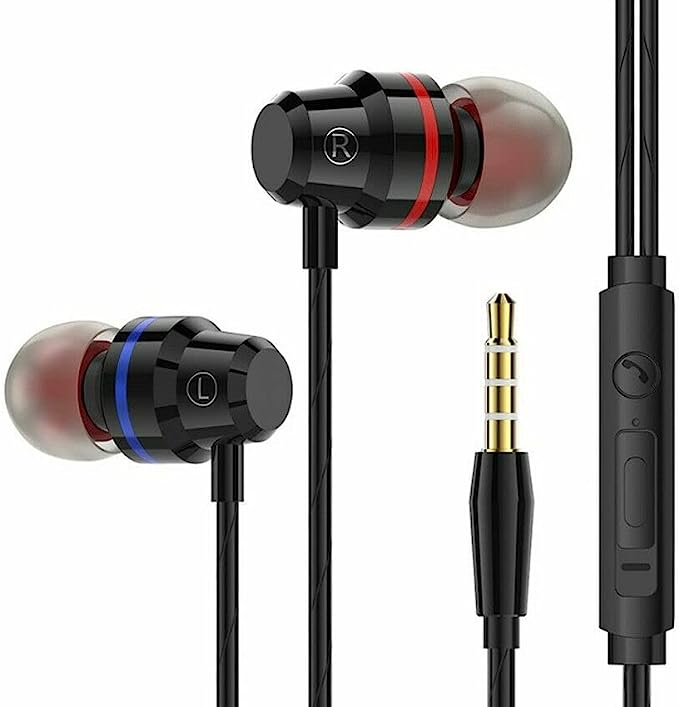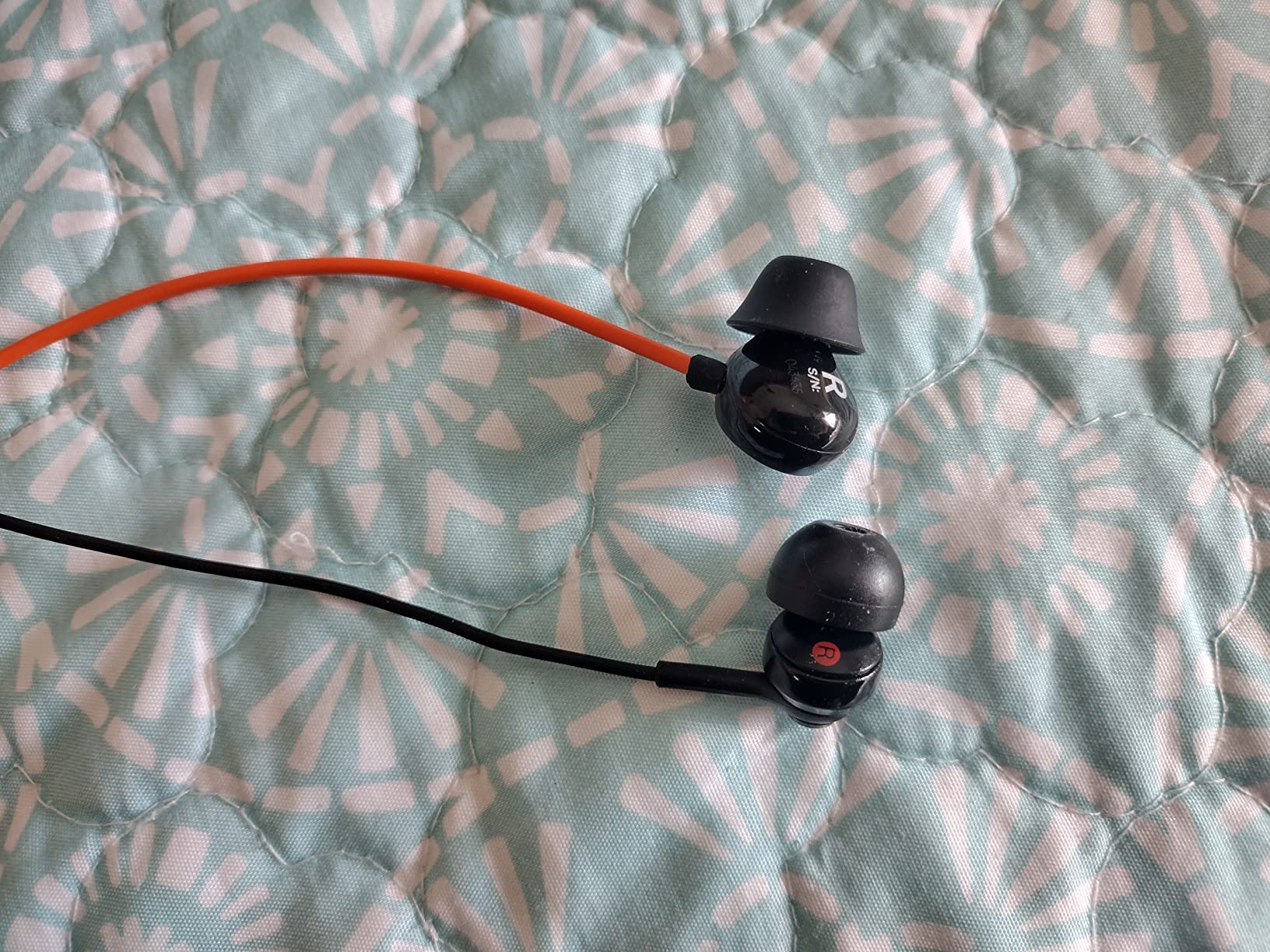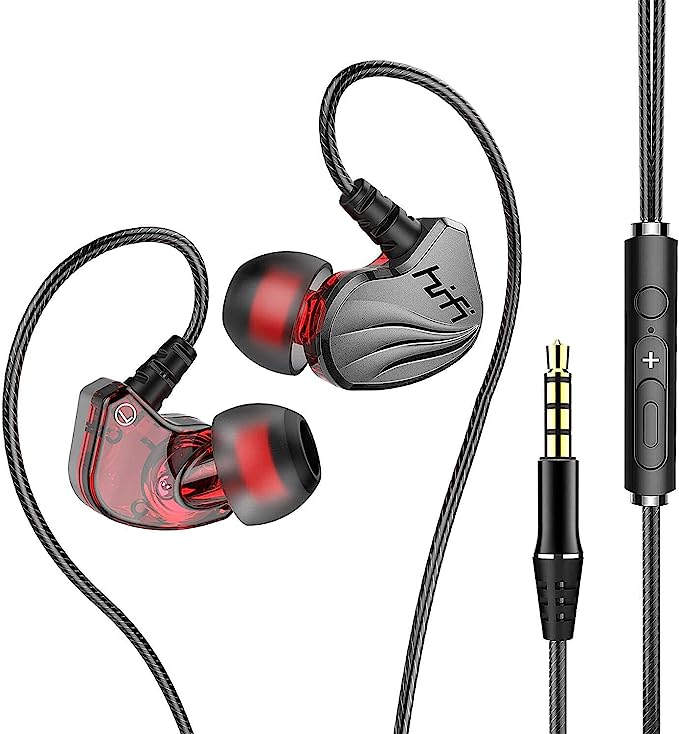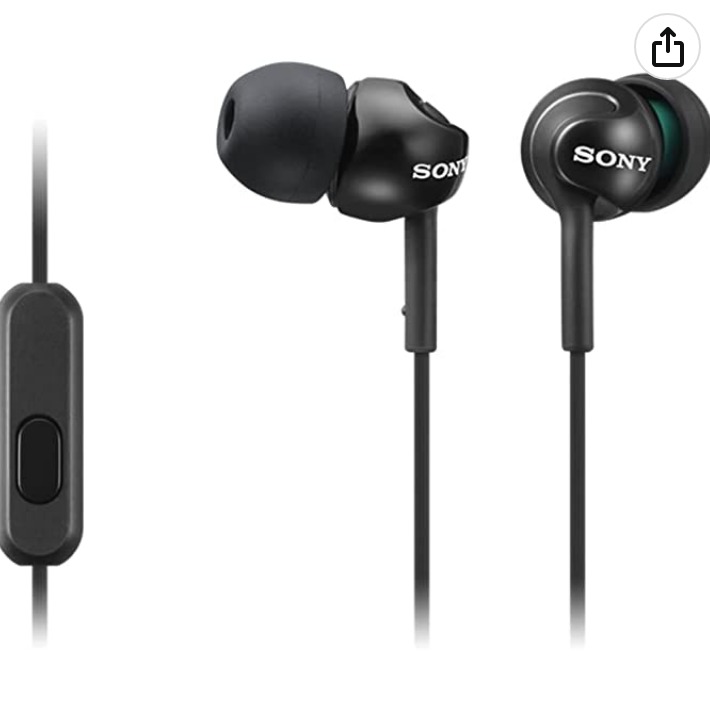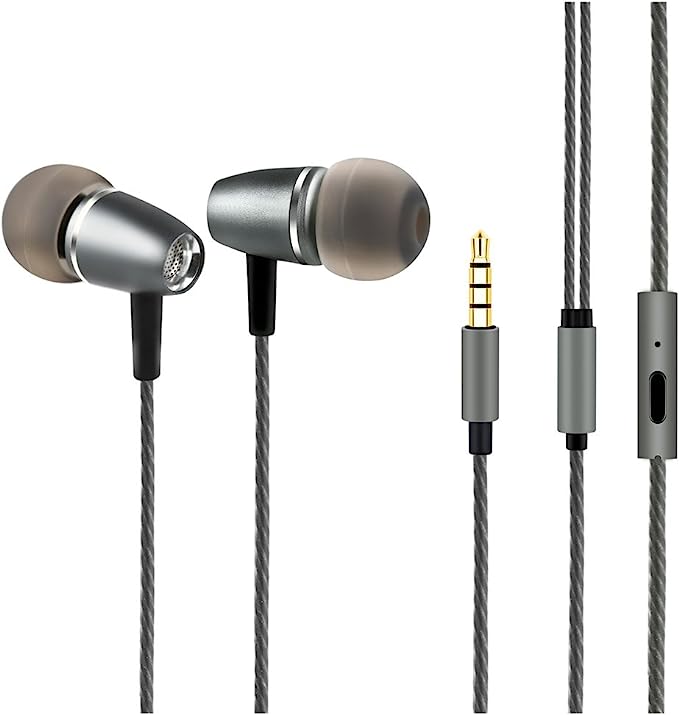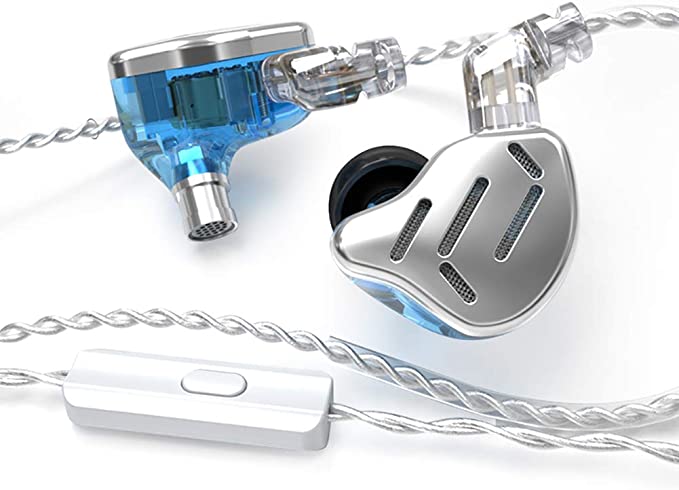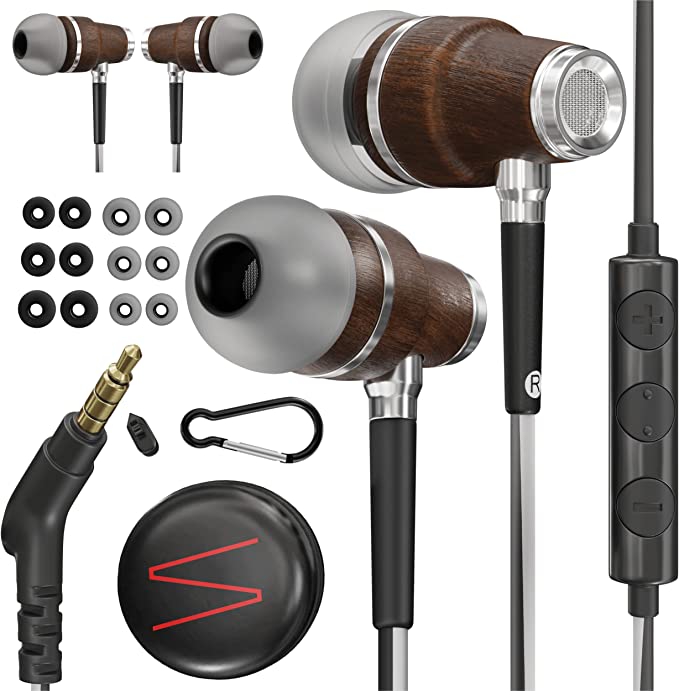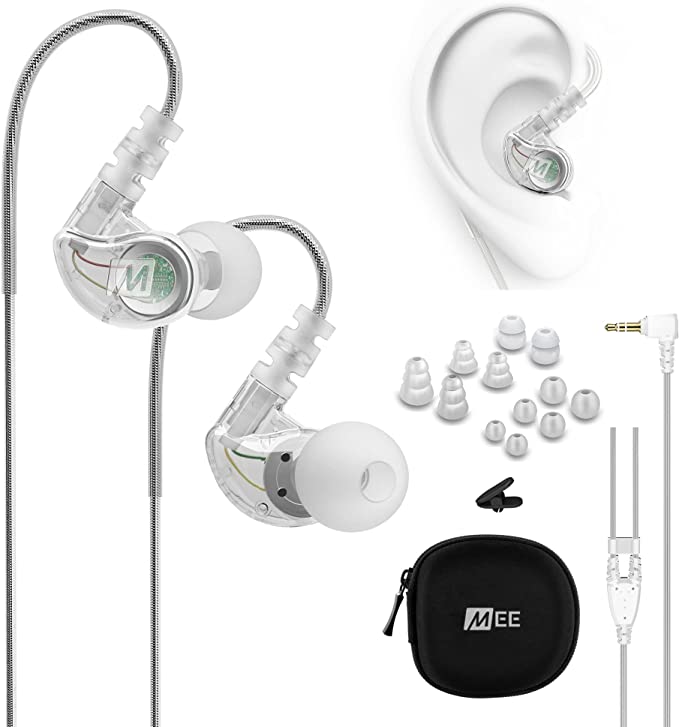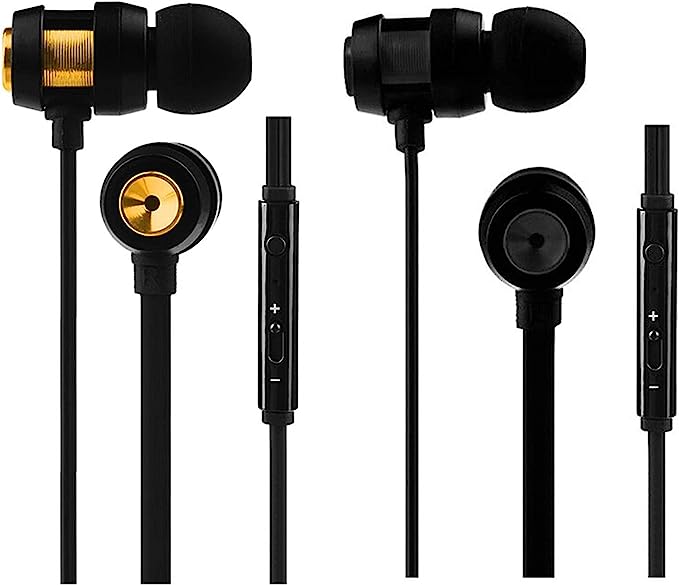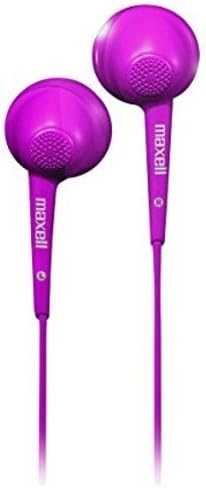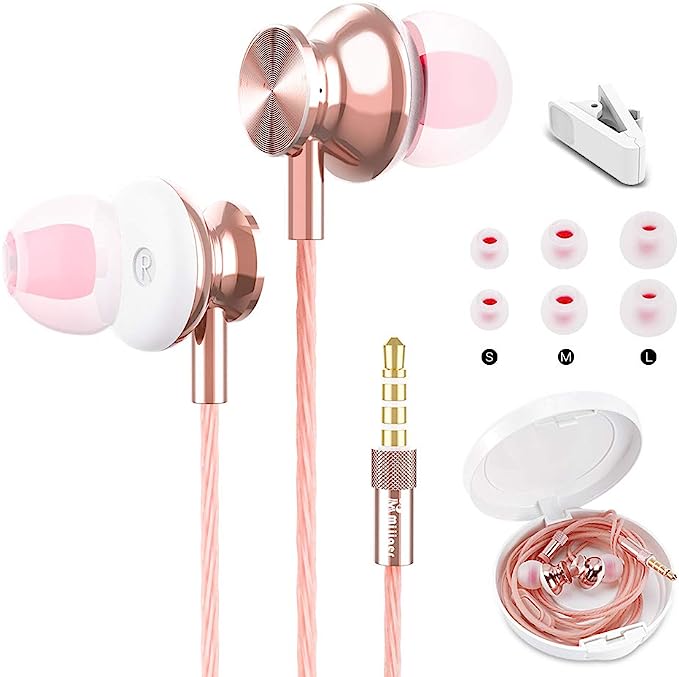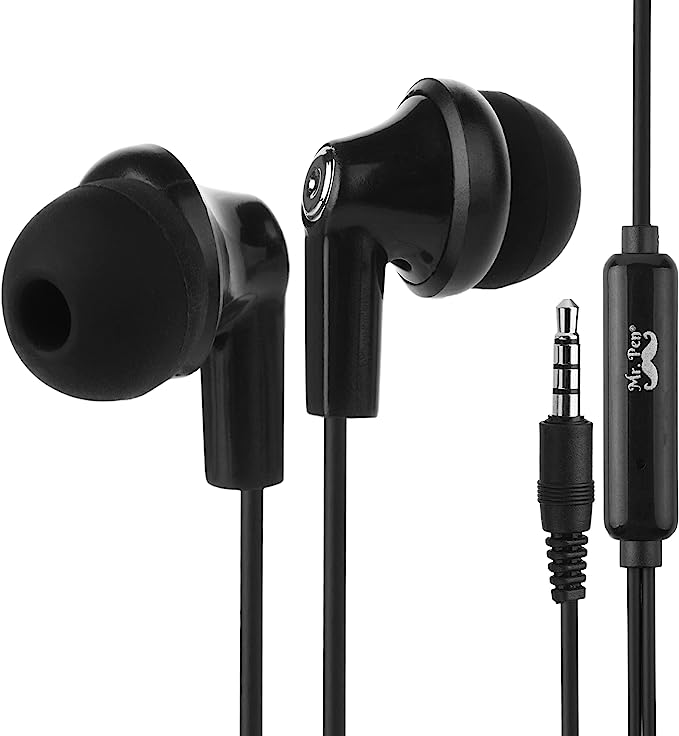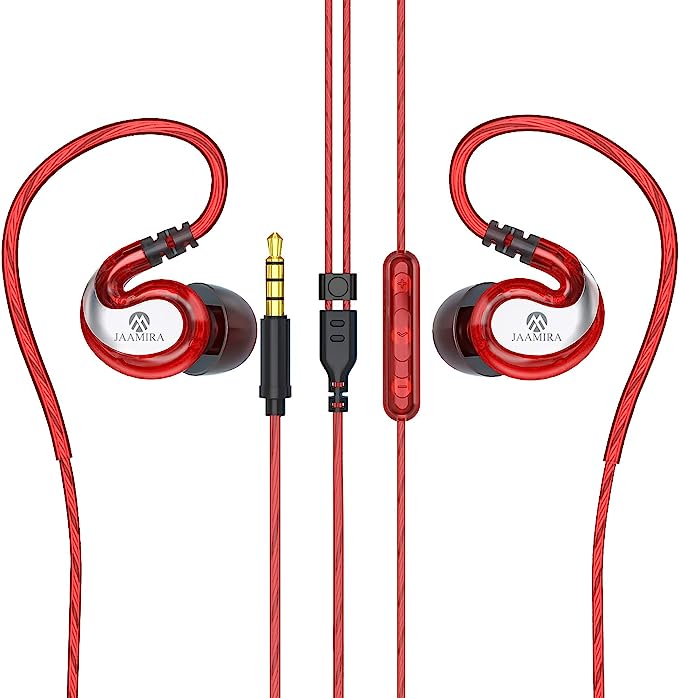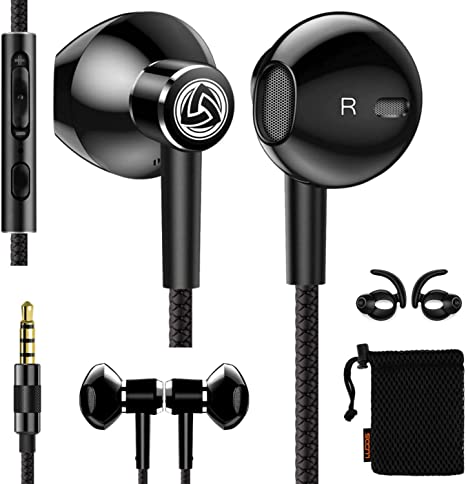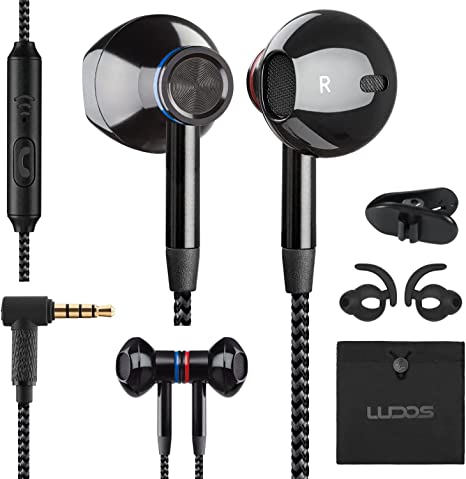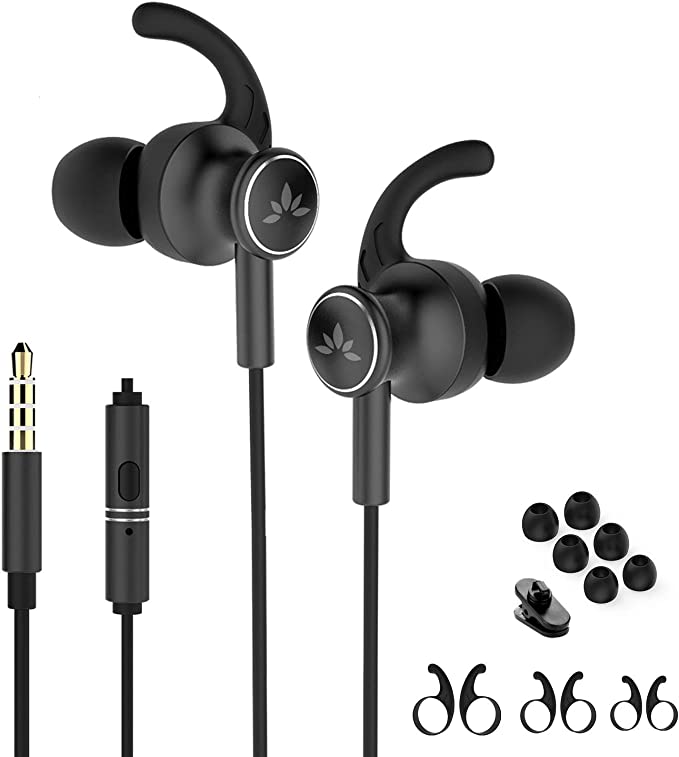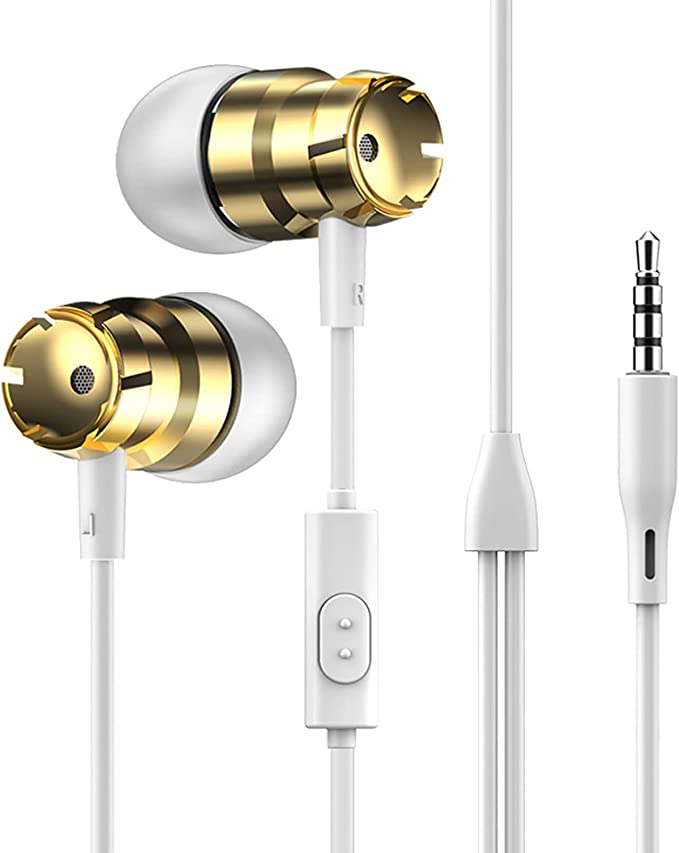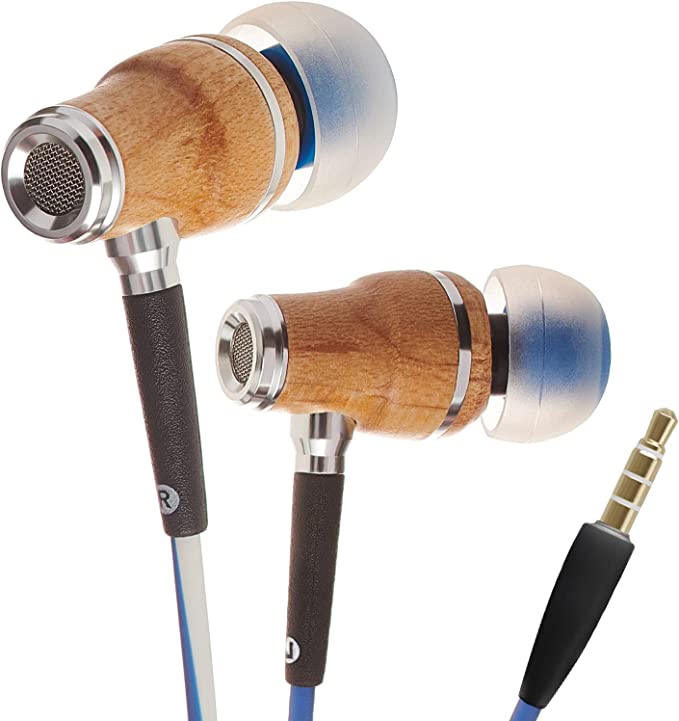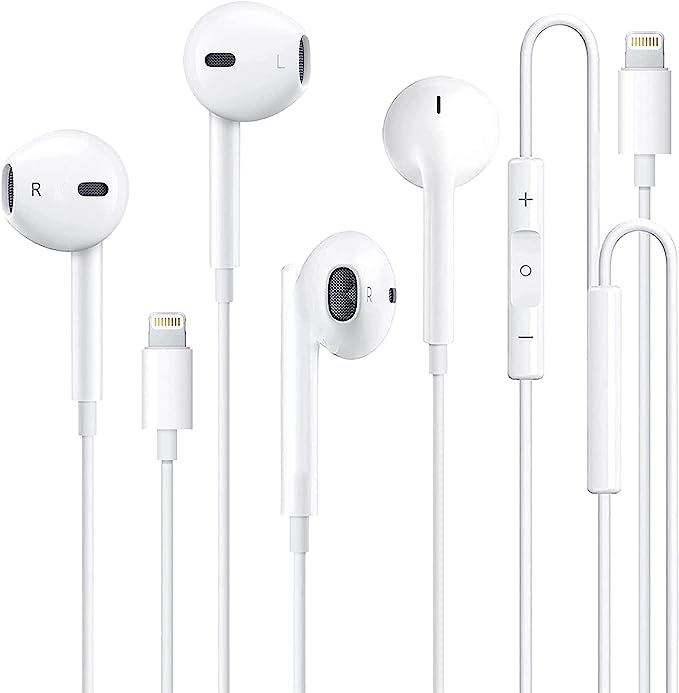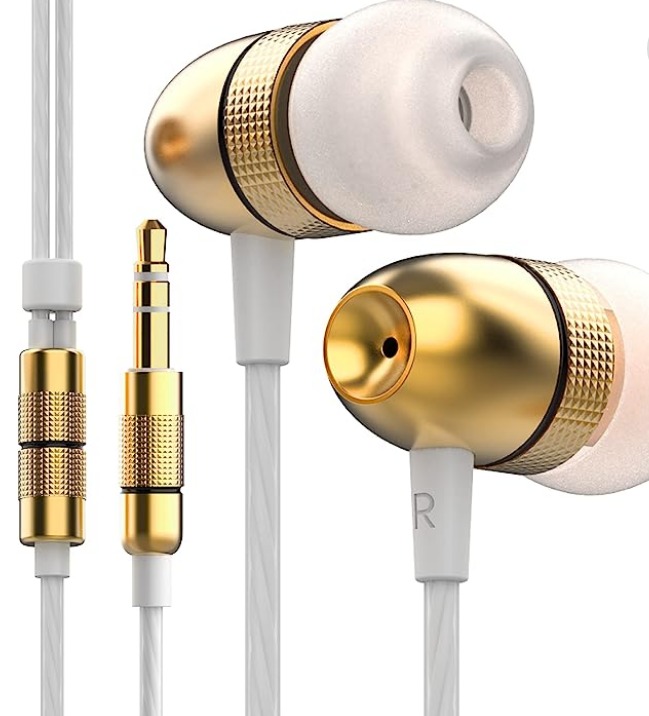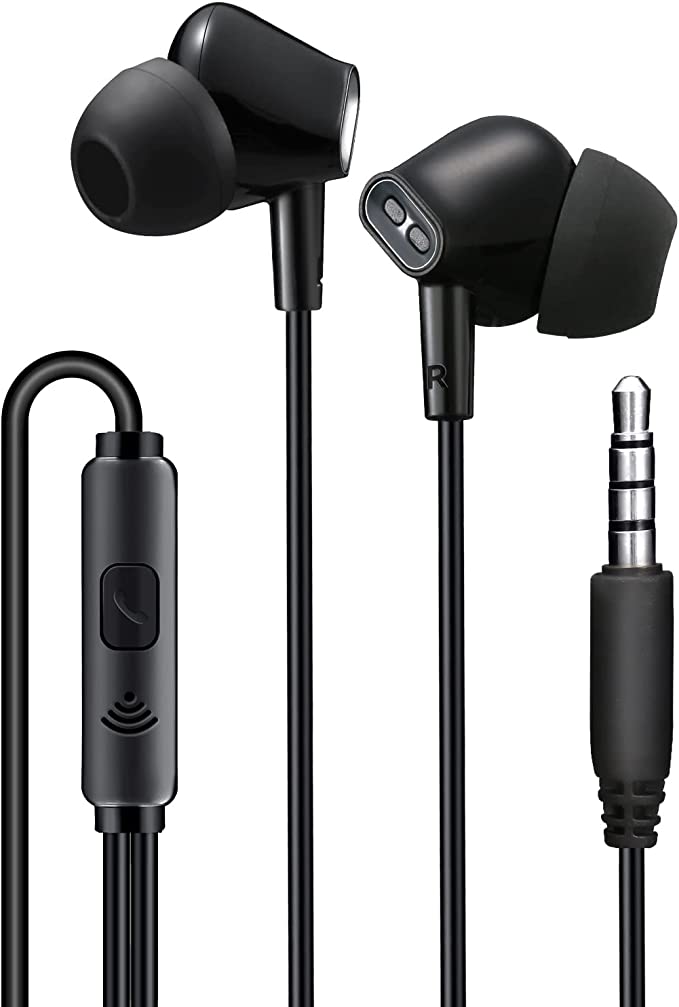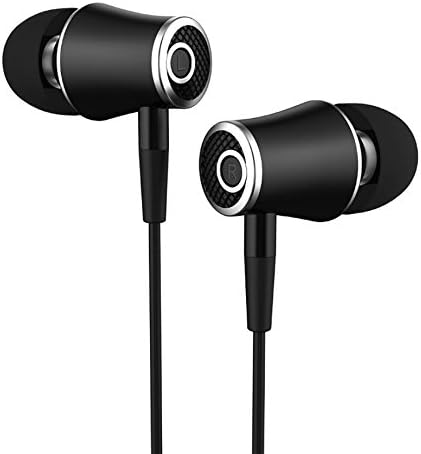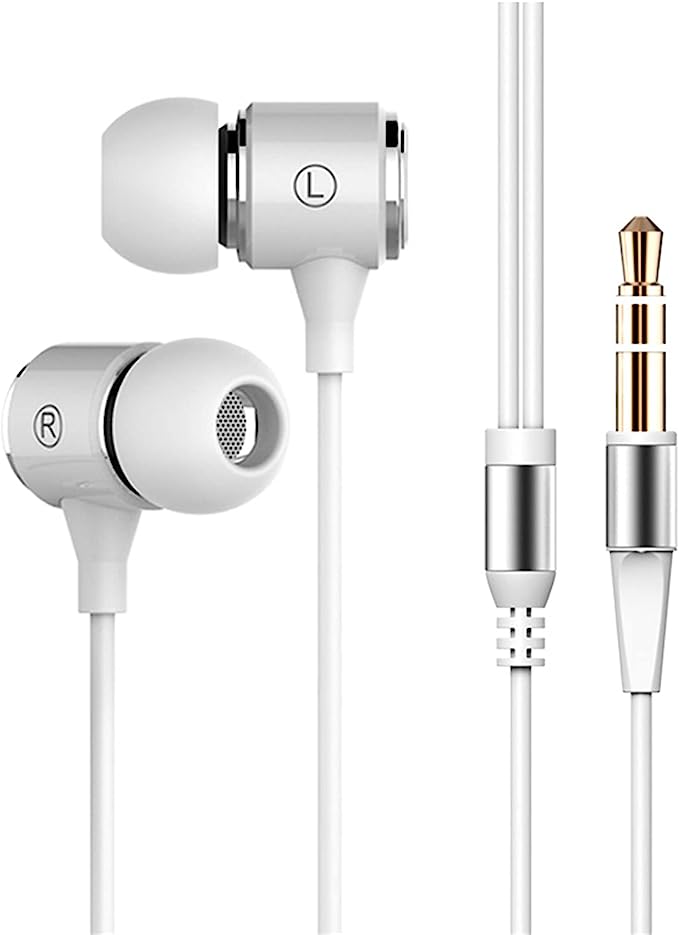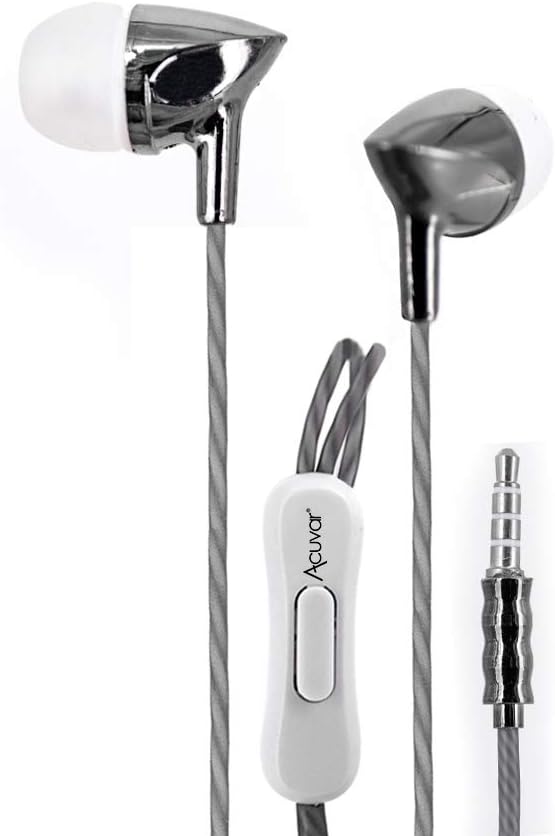Samsin ECOBUDT25 ECO Disk Headset: The Science and Niche of the 2.5mm Wired Audio Jack
Update on May 15, 2025, 4:37 a.m.
Ever rummaged through a drawer of old electronics, perhaps a box lovingly labeled “cables of yesteryear,” and stumbled upon a tiny, almost forgotten audio plug? It looks like the familiar headphone jack, but noticeably slimmer. Chances are, you’ve encountered the 2.5mm subminiature connector, a ghost from tech’s past that, rather surprisingly, hasn’t entirely given up the ghost. Today, we’re going to use a very specific, unassuming device – the Samsin ECOBUDT25 ECO Disk Headset, with 2.5mm Jack (Black) – as our magnifying glass to explore the fascinating world this little connector represents.
Now, I must confess, detailed specifications and design treatises on the Samsin ECOBUDT25 itself are as elusive as a perfectly quiet room in a modern city. The information available, primarily from its retail listing, tells us it’s a wired, in-ear headset in black, featuring a call answer/end button, and, crucially, that 2.5mm plug. It was first available on June 4, 2016, carries a modest price tag of $5.99, and has garnered a 3.4 out of 5-star rating from two users. But our journey today isn’t so much about this specific model’s market performance as it is about understanding the enduring science and niche utility that such a device embodies. So, let’s unplug the science behind it.
Echoes from the Past: The Journey of the 2.5mm Connector
That slender 2.5mm plug, often referred to as a subminiature phone connector, has a richer history than many might realize. Think back to the dawn of truly portable electronics. As devices shrank, so did the appetite for bulky components. The 2.5mm jack emerged as a space-saving solution, a smaller sibling to the more robust 6.35mm (quarter-inch) jacks found on hi-fi systems and the later, now ubiquitous, 3.5mm “miniature” jack.
In its heyday, the 2.5mm connector was the unsung hero of early mobile phones – those charmingly chunky bricks that predated the smartphone revolution often sported this little port for their hands-free kits. You’d also find it on many cordless landline phones, allowing you to chat while pottering around the house. It was a common feature on two-way radios (walkie-talkies) used by everyone from security personnel to adventurous kids. Even some early MP3 players, PDAs, and certain digital cameras (for remote shutter release cables or external microphones) utilized its compact form. It was, for a time, a quiet enabler of portable communication.
So, what led to its gentle fade from the mainstream spotlight? Largely, the industry gravitated towards the 3.5mm jack. The slightly larger connector offered a bit more durability, a more satisfying “clunk” when inserted, and as devices like the Sony Walkman and later the iPod championed the 3.5mm standard, it simply became the path of least resistance for manufacturers and consumers alike. Standardization, as it often does, picked a winner for mass-market audio.
Yet, the 2.5mm jack didn’t vanish. Like a seasoned character actor, it found its niche roles. You’ll still encounter it today on certain Private Branch Exchange (PBX) office telephones, allowing call center agents or executives to use lightweight headsets. Specialized communication gear, some assistive listening devices, and even a few modern cameras continue to employ it. This persistence is a testament to the “if it ain’t broke, don’t fix it” philosophy for specific, established applications. And it’s precisely for these scenarios that a product like the Samsin ECOBUDT25, with its unambiguous 2.5mm termination and a note that “no adapter [is] included,” finds its purpose.
The Heart of Listening: How Your Wired Earbuds Sing
Let’s peel back the plastic casing of an earbud, figuratively speaking, to understand the magic that allows the Samsin ECOBUDT25 to transform electrical signals from your device into the symphonies, podcasts, or crucial call information you hear. The provided information describes it as an “In Ear” “Ear bud,” and while it doesn’t specify the driver type, devices like this overwhelmingly use what are called dynamic drivers.
Imagine a tiny, intricate stage within each earpiece. The star performers are:
- The Diaphragm: A very thin, lightweight membrane, often dome-shaped. Think of it as a miniature drum skin.
- The Voice Coil: A coil of extremely fine wire attached to the back of the diaphragm.
- The Magnet: A small, permanent magnet positioned so the voice coil sits within its magnetic field.
When you plug the ECOBUDT25 into your device, an electrical current, which is essentially the audio signal in electrical form, travels down the wire. This current, representing the peaks and valleys of the sound wave, flows into the voice coil. Now, here’s where the physics gets fun – it’s a principle called electromagnetism. A current flowing through a coil of wire creates a temporary magnetic field around it. Because this voice coil is sitting within the field of a permanent magnet, the interaction between these two magnetic fields causes the voice coil to rapidly move back and forth, mirroring the fluctuations of the audio signal.
Since the voice coil is attached to the diaphragm, as the coil zips back and forth, the diaphragm is pushed and pulled along with it. This vibrating diaphragm is what pushes and pulls the air molecules next to it, creating tiny pressure waves. And what are these pressure waves? Sound! These waves travel down your ear canal, eventually reaching your eardrum, which vibrates in sympathy, and through a marvelous series of biomechanical levers and fluid dynamics in your middle and inner ear, your brain interprets these vibrations as, say, your colleague’s voice or your favorite song.
The “In Ear” design of the Samsin ECOBUDT25 means the earbud sits directly in, or at the entrance of, your ear canal. This can offer a couple of advantages. Firstly, it provides a degree of passive noise isolation – a bit like gently putting your fingers in your ears, it helps to block out some of the ambient noise, allowing you to focus on the audio from the headset. Secondly, it channels the sound more directly towards your eardrum, which can lead to a clearer and often more bass-responsive listening experience, particularly useful for understanding speech during hands-free calls.
More Than Just Sound: Capturing Your Voice with the ECOBUDT25
The Samsin ECOBUDT25 isn’t just for listening; it’s equipped for “handsfree calling,” meaning it has an integrated microphone. This tiny marvel, usually housed in a small nodule along the cable, performs the opposite trick to the earbud speaker: it converts your sound waves (your voice) into electrical signals.
Most headset microphones of this type are electret condenser microphones (ECMs). Here’s a simplified take on how they work:
An ECM also has a diaphragm, but this one is typically a very thin, permanently electrically charged (electret) film or a film placed next to an electret plate. When you speak, the sound waves from your voice cause this diaphragm to vibrate. As it vibrates, the distance between it and a fixed backplate changes. This change in distance alters a property called capacitance. The microphone’s internal circuitry (often a tiny field-effect transistor, or FET) converts these capacitance changes into a varying electrical voltage – an electrical replica of your voice. This signal then travels down another conductor within the headset cable, through that 2.5mm jack, and into your phone or communication device, ready to be transmitted to the person on the other end. It’s like a tiny, incredibly sensitive pressure sensor translating the nuances of your speech into an electrical language.
And what about that handy “call answer/end feature”? This is usually managed by a simple push-button switch also located in the inline microphone housing. When you press it, you’re essentially completing or interrupting a very low-power electrical circuit. Your phone or connected device is designed to recognize this specific electrical change – a momentary short, perhaps, or a specific resistance value introduced into the circuit – as a command: “answer incoming call,” “end current call,” or sometimes even “play/pause music.” It’s an elegantly simple piece of user interface engineering.
The Unseen Current: Why Wired Still Matters
In a world increasingly besotted with wireless everything, from charging to audio, why would a product like the Samsin ECOBUDT25, with its steadfastly wired connection, still hold appeal? The answer lies in the fundamental nature of a physical, wired audio pathway.
Firstly, there’s signal integrity. A direct electrical connection via a copper wire offers a very robust and often unadulterated path for an analog audio signal. While modern wireless audio codecs have become incredibly sophisticated, a wired connection inherently bypasses potential issues of radio frequency interference, Bluetooth pairing quirks, or the data compression that some (though not all) wireless standards might employ. For clear voice communication, this directness can be a real boon.
Secondly, latency, or delay, is practically non-existent. The electrical signals travel at a significant fraction of the speed of light. For a conversation, this means the audio is essentially instantaneous, ensuring a natural back-and-forth. While wireless latency has improved dramatically, for certain critical communications or for musicians, any perceptible delay can be problematic.
Thirdly, and quite liberatingly, the headset itself requires no batteries. It draws its minuscule power needs directly from the host device it’s plugged into. No charging cases to remember, no anxieties about your headset dying mid-call (unless your phone itself runs out of juice, of course!).
The Samsin ECOBUDT25, by its very design, embodies these wired virtues: a reliable, simple, and always-ready audio link for devices equipped with that specific 2.5mm port.
The Samsin ECOBUDT25: A Profile in Purpose
Let’s circle back to the Samsin ECOBUDT25 itself, piecing together its profile from the limited data we have. We know it’s a black, in-ear, wired headset for adults, designed for hands-free calling via its 2.5mm jack, with an included call answer/end feature. Its packaging dimensions are given as 8.11 x 3.58 x 1.1 inches, and it weighs a mere 1.58 ounces, suggesting it’s light and unobtrusive for potentially long periods of use. The product description also mentions a “Black/Wood Finish,” hinting at a possible aesthetic touch, though the primary color listed is black. The name “ECO Disk Ear Bud” is intriguing, but the terms “ECO” (perhaps for “economy,” given the price, or an unstated ecological consideration) and “Disk” (referring to a shape aspect?) aren’t defined in the source.
Its most compelling feature, in the context of its market, is arguably its price: $5.99. This positions it as an incredibly accessible solution for a very specific need. Imagine these scenarios:
- An office worker whose company still uses desk phones with 2.5mm headset jacks. Their old headset breaks; the ECOBUDT25 is a quick, inexpensive replacement to get them back up and running.
- A field technician or security guard using a two-way radio that requires a 2.5mm earpiece with a microphone for clear, discreet communication.
- A retro technology enthusiast who wants to use an older mobile phone or PDA with its original audio accessories.
- Someone who needs a basic, reliable headset for a specific piece of equipment, perhaps a camera with a 2.5mm remote trigger that can also handle an audio cue.
In such cases, the Samsin ECOBUDT25 isn’t trying to compete with high-end audiophile gear or feature-packed wireless buds. It’s offering a pragmatic, no-frills solution to a well-defined problem, and doing so at a price point that makes it an easy, almost impulse, purchase for those who specifically need that 2.5mm connection. The snippet’s mention of “2 global ratings” averaging “3.4 out of 5 stars” is a tiny snapshot, hinting that for at least a couple of users, it likely fulfilled its intended purpose adequately.
Coda: The Enduring Value of Specificity and Simplicity
The Samsin ECOBUDT25 ECO Disk Headset, with its humble 2.5mm jack, might seem like an anachronism in our hyper-connected, wireless-obsessed world. Yet, its existence, and the continued niche for the technology it represents, speaks volumes about the diverse tapestry of technological needs. It’s a quiet reminder that not all “old” technology is obsolete, especially if it continues to solve a real-world problem effectively and efficiently for a particular group of users.
There’s an inherent elegance in such simplicity. This headset isn’t trying to be a jack-of-all-trades; it is a master of one, very specific domain: providing clear, wired audio and voice communication for devices equipped with a 2.5mm port. And in doing so, it allows us to appreciate the remarkable science packed into even the most unassuming of our electronic companions – from the dance of electrons in a wire to the intricate vibrations that bring sound to our ears. Sometimes, the most enduring technologies are not the flashiest, but those that simply, and reliably, get the job done.
